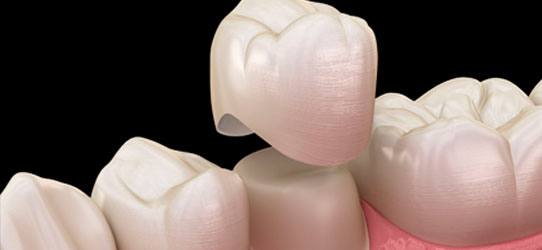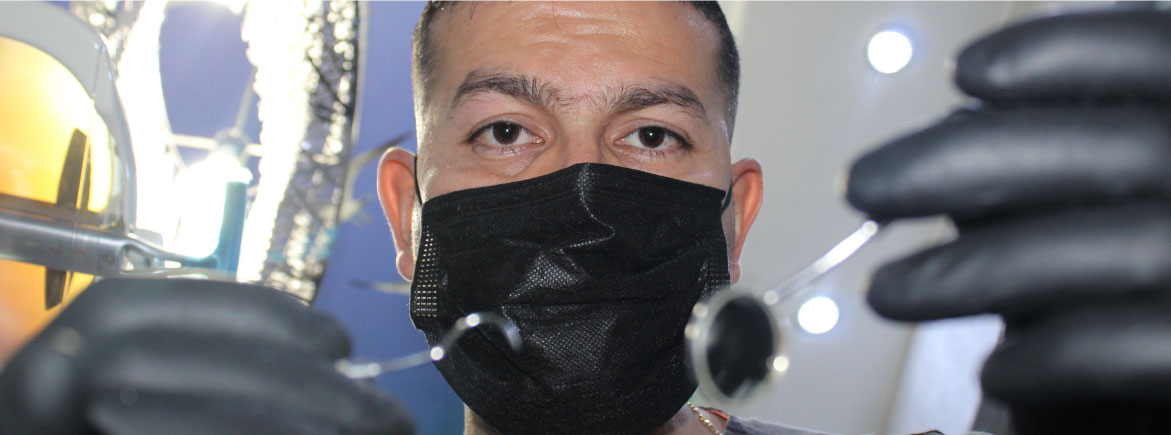 Dental Crowns
Dental Crowns
A dental crown is a tooth-shaped "cap" that is placed over a tooth -- to cover the tooth to restore its shape and size, strength, and improve its appearance.
The crowns, when cemented into place, fully encase the entire visible portion of a tooth that lies at and above the gum line.
Why Is a Dental Crown Needed?
A dental crown may be needed in the following situations:
To protect a weak tooth (for instance, from decay) from breaking
or to hold together parts of a cracked tooth.
To restore an already broken tooth or a tooth that has been
severely worn down.
To cover and support a tooth with a large filling when there
isn't a lot of tooth left.
To hold a dental bridge in place.
To cover misshapened or severely discolored teeth.
To cover a dental implant.
To make a cosmetic modification.
What Steps Are Involved in Preparing a Tooth for a Crown?
Preparing a tooth for a crown usually requires two visits to the dentist -- the first step involves examining and preparing the tooth, the second visit involves placement of the permanent crown.
First visit: Examining and preparing the tooth.
At the first visit in preparation for a crown, Our dentist may take a few X-rays to check the roots of the tooth receiving the crown and surrounding bone. If the tooth has extensive decay or if there is a risk of infection or injury to the tooth's pulp, a root canal treatment may first be performed.
Before the process of making a crown begins, your dentist will anesthetize (numb) the tooth and the gum tissue around the tooth. Next, the tooth receiving the crown is filed down along the chewing surface and sides to make room for the crown. The amount removed depends on the type of crown used. If, on the other hand, a large area of the tooth is missing (due to decay or damage), your dentist will use filling material to "build up" the tooth to support the crown.
After reshaping the tooth, your dentist typically will use a paste or putty to make an impression of the tooth to receive the crown. Sometimes, though, impressions are made with a digital scanner. Impressions of the teeth above and below the tooth to receive the dental crown will also be made to make sure that the crown will not affect your bite.
The impressions or scans are sent to a dental lab where the crown will be manufactured. The crown is usually returned to your dentist's office in two to three weeks. If the crown is made of porcelain, your dentist will also select the shade that most closely matches the color of the neighboring teeth. During this first office visit your dentist will make a temporary crown to cover and protect the prepared tooth while the crown is being made. Temporary crowns usually are made of acrylic and are held in place using a temporary cement.
Second visit: Receiving the permanent dental crown
At the second visit, your dentist will remove the temporary crown and check the fit and color of the permanent crown. If everything is acceptable, a local anesthetic will be used to numb the tooth and the new crown is permanently cemented in place.
How Long Do Dental Crowns Last?
On average, dental crowns last between five and 15 years. The life span of a crown depends on the amount of "wear and tear" the crown is exposed to, how well you follow good oral hygiene practices, and your personal mouth-related habits (you should avoid such habits as grinding or clenching your teeth, chewing ice, biting fingernails, and using your teeth to open packaging).
Does a Crowned Tooth Require Special Care?
While a crowned tooth does not require any special care, remember that simply because a tooth is crowned does not mean the tooth is protected from decay or gum disease. Therefore, continue to follow good oral hygiene practices, including brushing your teeth at least twice a day, flossing daily -- especially around the crown area where the gum meets the tooth -- and rinsing with an antibacterial mouthwash at least once a day.










